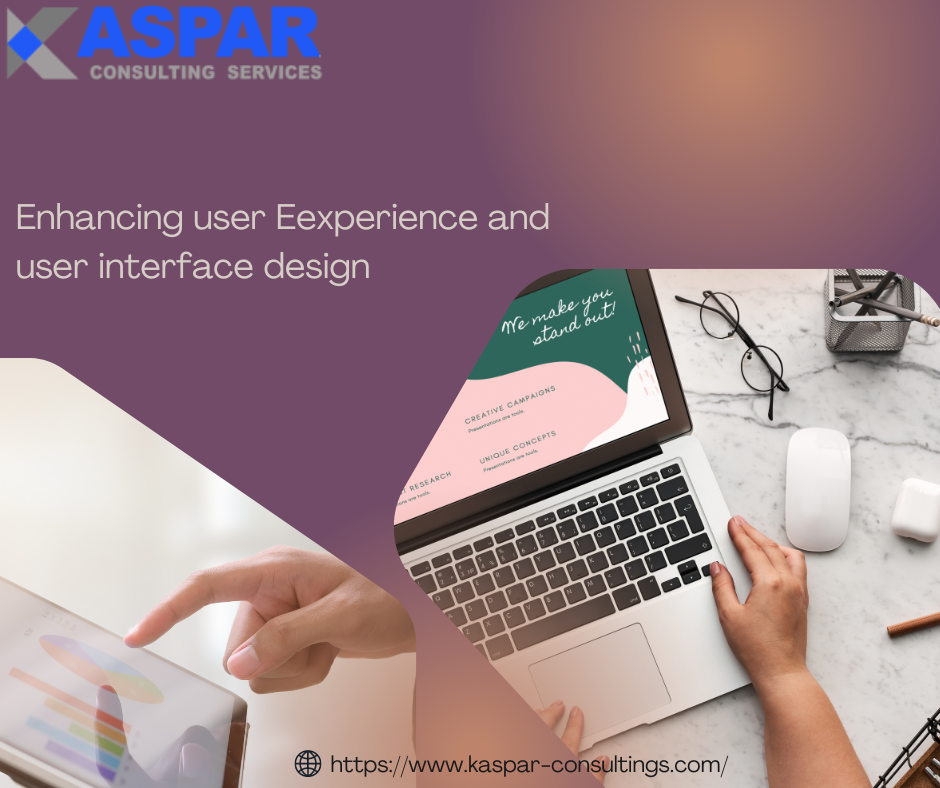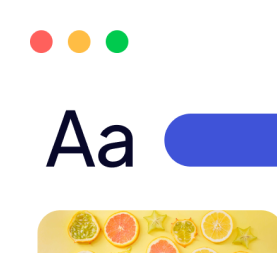- Odoo
- April 22, 2024
- 10 Minutes
Enhancing User Experience (UX) and User Interface (UI) Design: The Key to Delighting Users


Author
Asim Jibran
Enhancing User Experience (UX) and User Interface (UI)Design: The Key to Delighting Users
Introduction
Welcome to the world of UX and UI design, where the fusion of creativity and functionality results in an unforgettable user experience. In this article, we will delve deep into the realm of Enhancing User Experience (UX) and User Interface (UI) Design and uncover the strategies and techniques that separate good designs from great ones.
The Essence of Enhancing User Experience (UX) and User Interface (UI) Design
At its core, UX design focuses on crafting a seamless and enjoyable journey for users as they interact with a product or service. On the other hand, UI design is responsible for visually presenting this experience, ensuring aesthetics and usability align harmoniously. Together, they form the backbone of any digital experience and have a profound impact on user satisfaction and retention.
Understanding the Impact of UX/UI Design
The success of any digital product hinges on how well it understands and caters to its users’ needs. By Enhancing User Experience (UX) and User Interface (UI) Design, Good companies like Kaspar Consulting can build a loyal customer base and gain a competitive advantage. User-friendly interfaces foster positive emotions, which directly influence customer loyalty and advocacy.
The Fundamentals of Great UX/UI Design
Aesthetics: Beyond the Surface
Visual appeal plays a vital role in UX/UI design. The right color schemes, fonts, and graphics contribute to a product’s personality and brand identity. When done right, aesthetics elevate the user experience, making it more engaging and memorable.
Intuitive Navigation: Guiding the User
One of the cornerstones of excellent UX/UI design is intuitive navigation. Users should be able to effortlessly find what they need and navigate through the product without feeling lost. Awell-organized and logical layout enhances usability and reduces frustration.
Responsive Design: Adapting to Every Device
In today’s multi-device world, responsive design is non-negotiable. A product must adapt seamlessly to various screen sizes and orientations without compromising its usability and aesthetics. It involves designing and coding websites and applications in a way that allows them to automatically adapt and adjust their layout, content, and navigation to fit any screen, whether it’s a desktop computer, tablet, smartphone, or other mobile devices.
Speed and Performance: The Need for Speed
A slow-loading product can turn away even the most patient users. Optimizing speed and performance is critical to preventing bounce rates and ensuring a smooth user experience. In today’s fast-paced digital world, users expect instant gratification and smooth interactions. Slow-loading websites or laggy applications can lead to frustration and drive users away. Therefore, prioritizing speed and performance is essential for delivering a delightful user experience.
The Psychology behind UX/UI Design
Emotional Design: Forging an Emotional Connection
Humans are emotional beings, and UX/UI designers can leverage this aspect to create powerful experiences. Emotional design taps into users’ feelings, fostering a deeper connection with the product. UI and UX designers leverage emotional design principles to elicit positive feelings and connections with the product, resulting in enhanced user satisfaction and engagement.
Cognitive Load: Keeping it Simple
Reducing cognitive load is essential in UX/UI design. By presenting information and actions in a simple and clear manner, designers help users make decisions more effortlessly. By reducing cognitive load, designers can enhance user experiences, improve usability, and make interactions more intuitive and enjoyable.
Creating Delightful User Experiences
Micro interactions: The Little Delights
Micro interactions are small, subtle animations or visual cues that add a touch of delight to the user experience. From a heart animation when liking a post to a subtle sound when pressing a button, these micro interactions leave a lasting impact on users.
Personalization: Tailoring the Experience
Personalization allows products to cater to individual users’ preferences, increasing relevance and engagement. From personalized recommendations to tailored onboarding experiences, the possibilities are vast.
Designing for Accessibility and Inclusivity
Inclusive Design: Embracing Diversity
Designing for all users, regardless of their abilities, is the essence of inclusive design. Accessibility ensures that everyone can access and use a product without barriers. Inclusive design goes beyond compliance with accessibility guidelines and seeks to proactively consider diverse user needs from the outset of the design process. The goal is to ensure that all users, including those with disabilities, can fully participate and engage with the product without barriers.
Empathy in Design: Putting Yourself in Their Shoes
Empathy is a powerful tool in UX/UI design. By understanding users’ pain points and limitations, designers can create solutions that truly address their needs. In UI (User Interface) and UX (User Experience) design, empathy involves putting oneself in the shoes of the users to gain deep insights into their emotions, frustrations, and motivations. By empathizing with users, designers can create more meaningful and user-centric products that resonate with and delight their audience.
Design Thinking: The UX/UI Design Process
Empathize: Understanding the Users: The first stage of design thinking involves empathizing with users to grasp their needs, desires, and challenges.
Define: Defining the Problem: After understanding the users, designers define the problem they need to solve.
Ideate: Generating Ideas: In this creative phase, designers brainstorm potential solutions to the defined problem.
Prototype: Bringing Ideas to Life: Prototyping allows designers to visualize their concepts and gather feedback before full-scale development.
Test: Evaluating and Iterating: Testing with real users provides invaluable insights, allowing designers to iterate and refine their designs.
Trends and Innovations in UX/UI Design
Augmented Reality: Enhancing Realism
Augmented reality is transforming the way users interact with products. By overlaying digital elements on the real world, AR provides immersive experiences. In recent years, AR has gained significant popularity and has become a prominent trend in UI (User Interface) and UX (User Experience) design. AR has the potential to revolutionize the way users interact with digital products, offering immersive and engaging experiences.
Voice User Interface (VUI): Embracing Voice Commands
Voice User Interface (VUI) is a technology that enables users to interact with digital devices or applications using spoken language. VUI has become a significant trend in UI (User Interface) and UX (User Experience) design due to the increasing popularity of voice-activated devices and virtual assistants. It offers a hands-free and natural way for users to interact with technology, providing convenience and accessibility.
Dark Mode: Reducing Eye Strain
Dark mode is a UI (User Interface) and UX(User Experience) design trend that has gained immense popularity in recent years. It provides users with an alternative color scheme that uses dark backgrounds and light-colored text and elements instead of the traditional light backgrounds with dark text. Dark mode offers various benefits, and its implementation has become a sought-after feature in many digital products and applications.
Biometric Authentication: Enhancing Security
Biometric authentication is a cutting-edge trend in UI (User Interface) and UX (User Experience) design that leverages unique physical or behavioral characteristics to verify and authenticate users. Biometric authentication offers a secure and convenient alternative to traditional password-based authentication methods. It has become increasingly popular in various digital products and applications, including smartphones, laptops, and banking applications.
Measuring UX/UI Success
Key Performance Indicators (KPIs): Metrics for Success
Measuring the success of UX/UI design requires tracking specific KPIs. Common indicators include conversion rates, bounce rates, and user satisfaction scores.
User Testing and Feedback: Continuous Improvement
User testing and feedback are essential for continuous improvement. Conducting usability tests and gathering user feedback helps identify pain points and areas for enhancement.
Enhancing User Experience (UX) and User Interface (UI)Design in E-commerce
● Simplified Checkout Process: Reducing Abandonment
● In e-commerce, a streamlined checkout process is crucial for reducing cart abandonment. Simple and intuitive steps lead to a higher conversion rate.
● High-Quality Product Images: Building Trust
● Clear and high-quality product images instill confidence in potential buyers. Visuals play a pivotal role in e-commerce conversions.
● Personalized Recommendations: Upselling and Cross-selling
● Personalized product recommendations based on user behavior can lead to increased upselling and cross-selling opportunities.
Ethical Considerations in UX/UI Design
Ethical Design: Prioritizing User Well-being
Ethical design is a design philosophy that places a strong emphasis on promoting ethical principles and values in the creation of products and experiences. It involves considering the potential impacts of design decisions on users, society, and the environment, and ensuring that design choices align with moral and social responsibilities. Ethical design goes beyond aesthetics and functionality to prioritize the well-being and rights of users and the broader community.
Data Privacy: Safeguarding User Information
Data privacy refers to the protection of individuals’ personal information and the right to control how their data is collected, used, stored, and shared. In the digital age, where data is constantly collected and processed, data privacy has become a crucial aspect of individual rights and cybersecurity. It involves implementing measures to safeguard sensitive data from unauthorized access, misuse, and exploitation.
Inclusivity and Diversity: Embracing Differences
Designers should strive to create products that cater to diverse audiences, ensuring inclusivity and accessibility for all users. In the context of design, including UI (User Interface) and UX (User Experience), embracing inclusivity and diversity means creating products that cater to a wide range of users, regardless of their background, abilities, or identities.
The Role of UX/UI Design in Branding and Marketing
Brand Consistency: Across All Touch points
Consistent UX/UI design reinforces brand identity and message, strengthening the brand’s image across all platforms. It refers to maintaining uniformity in the brand’s message, visuals, and values across all touchpoints and interactions with customers. Whether it’s the company’s website, social media presence, marketing materials, or customer service interactions, brand consistency ensures that customers have a cohesive and seamless experience with the brand.
Emotional Branding: Creating Brand Advocates
A well-designed UX/UI can evoke emotions that foster a strong bond between users and the brand, creating brand advocates. By tapping into the customers’ feelings, values, and aspirations, emotional branding creates a bond that goes beyond rational decision-making. This emotional bond fosters brand loyalty and transforms customers into passionate brand advocates.
Storytelling through Design: Building Narratives
Design elements can be used to tell stories and create immersive narratives that captivate users and leave a lasting impression. Through the strategic use of visuals, interactions, and content, designers can create products that not only function flawlessly but also evoke emotions and leave lasting impressions.
The Collaborative Nature of UX/UI Design
Multidisciplinary Collaboration: Bridging Skills

User Testing and Feedback: A Continuous Loop

Frequently Asked Questions (FAQs)
What is the difference between UX and UI design?
UX design focuses on creating a seamless and enjoyable user journey, while UI design is responsible for the visual presentation and aesthetics of the product.
How does UX/UI design impact customer loyalty?
Enhancing User Experience (UX) and User Interface (UI) Design can significantly impact customer loyalty by fostering positive emotions and ensuring user satisfaction.
Why is responsive design crucial in UX/UI?
Responsive design ensures that a product adapts seamlessly to different devices, providing a consistent experience for users.
What are micro interactions, and why are they important?
Micro interactions are small animations or visual cues that add delight to the user experience, leaving a lasting impression on users.
How does empathy play a role in UX/UI design?
Empathy helps designers understand users’ needs and limitations, leading to solutions that truly cater to their requirements.
Why is accessibility important in UX/UI design?
Designing for accessibility ensures that all users, regardless of their abilities, can access and use a product without barriers.
Conclusion
Enhancing User Experience (UX) and User Interface (UI) Design is a complex yet rewarding journey. By understanding the impact of UX/UI design, leveraging psychology, and embracing inclusive practices, designers can create products that resonate with users on a deeper level. Remember, successful UX/UI design revolves around empathy, creativity, and an unwavering commitment to delivering unforgettable experiences.




